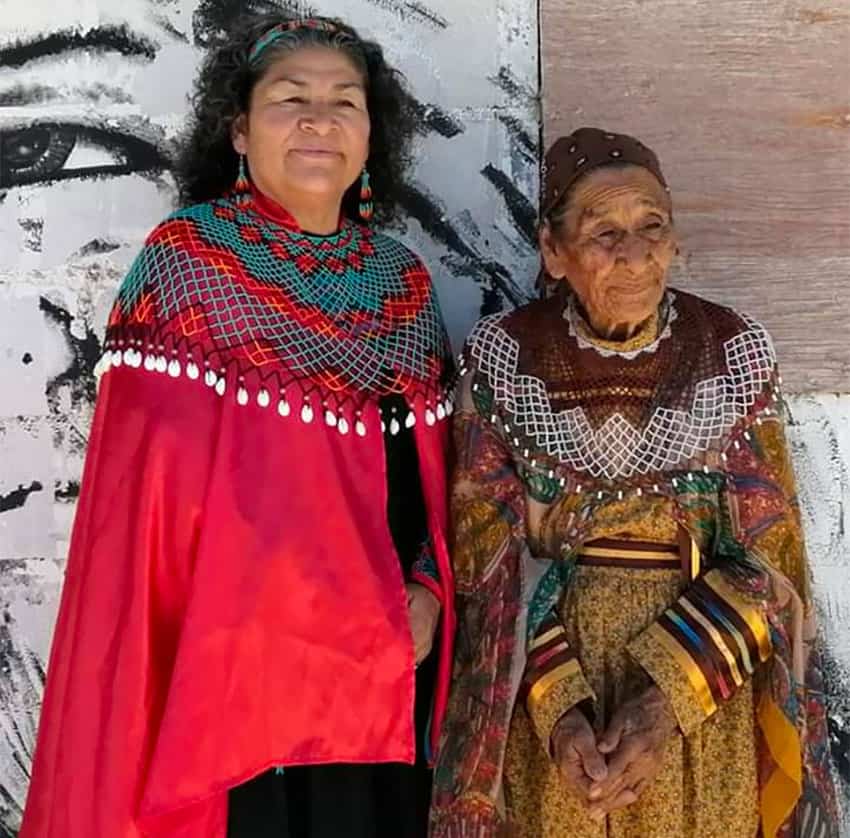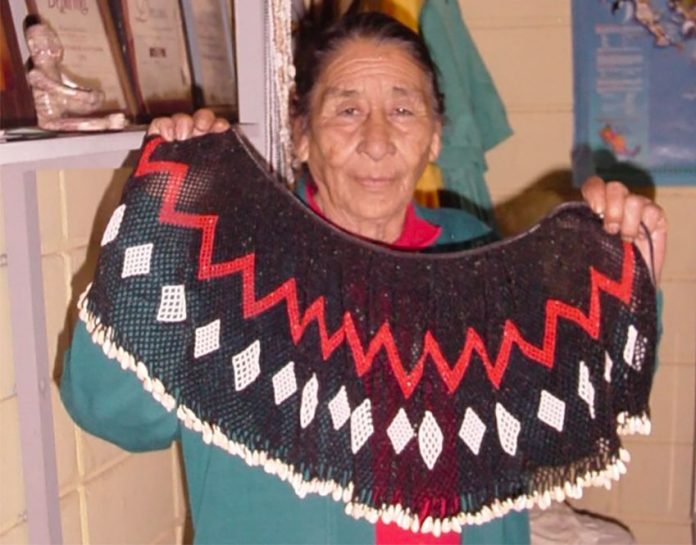Many people might think that the only beadwork done in Mexico is that of the Huichol (or Wixáritari) people. But that is not the case.
Inocencia González Saiz, 83, was awarded Mexico’s national grand prize in handcrafts for her life’s work in beads at a ceremony at the Los Pinos Cultural Complex in Mexico City earlier this month.
González is Cocopah, one of five indigenous groups found in Baja California. There are about 500 members of the indigenous group in the state, mostly in the town of El Mayor on the highway south from Mexicali to San Felipe.
The Cocopah have inhabited the lower Colorado River and the river delta for hundreds of years. There are some in Sonora (fewer than 100), but the largest community — with 1,000 members — is the Cocopah Tribe in Arizona.
González was born in El Mayor on December 28, 1936 but it wasn’t until 1973 that she decided to learn to make Cocopah beaded collar yokes from Juan García Aldama, an elderly man and the last person who knew how to make them at the time.

The collar yoke has a special place in Cocopah identity. For many generations, it was an important aspect of Cocopah women’s dress, along with a skirt made of willow bark. The collars in their current form date back to the early colonial period, when the Spanish brought glass beads to trade with native peoples.
While relatively cheap to make in Europe, glass was previously unknown in Mexico and beads were made laboriously one by one from stone, shell, bone and clay. The abundance of the European beads allowed the Cocopah to create much more elaborate beaded adornments, including collars that could extend down over the chest and back.
González was in her late 30s at the time of her apprenticeship, but had no experience with the making of beaded ítems. Since then she has dedicated her life to preserving this art, along with the Cocopah language, rites, dances and traditional cuisine.
Since her maestro died in 1990, she has become the expert on the collar yokes, along with daughter Antonia Torres González. Inocencia González is the only artisan in the community that uses the old weaving method, and her pieces take up to a year to make.
The making of small beaded jewelry items and other trinkets is widespread among Cocopah women in El Mayor, mostly to sell at markets and to tourists. But it is the work of women like González that ensures its cultural roots stay intact.
Source: La Voz de la Frontera (sp), El Imparcial (sp), La Jornada (sp)
